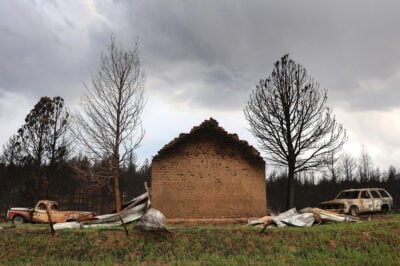ProPublica is a nonprofit newsroom that investigates abuses of power. Sign up to receive our biggest stories as soon as they’re published.
As hospitals around the country fear running out of beds and equipment to treat patients, many of us want to know: How will our local hospitals deal with this crisis? ProPublica launched a tool that allows you to look up how patients with COVID-19 could affect hospitals in your area under various scenarios.
For local reporters, this data can be a helpful starting point for writing important stories about the challenges facing your health care system. Here’s our advice on how to use it.
What We Found
The Harvard Global Health Institute estimated the number of hospital beds available in each region of the country, as well as the average occupancy of those beds. What they found shows that unless we can slow the spread of the pandemic, hospitals could be overwhelmed. We’ve created charts for each region that help you see at what point a region would run out of hospital beds in various scenarios.
Look up your region and examine its ability to handle the expected capacity required under various scenarios.
How You Can Use It
Reporters can use this data to write stories about the hospital capacity in their regions, as well as what local officials are doing to increase that capacity in the event they are overwhelmed by patients with COVID-19.
First, look up your region and examine its ability to handle the expected capacity required under various scenarios. Pay attention to:
- Our unit of measurement. We’re dividing the country up into hospital referral regions, which “represent regional health care markets for tertiary medical care. Each HRR contains at least one hospital that performs major cardiovascular procedures and neurosurgery,” according to the Dartmouth Atlas Project. Sometimes these regions cross state borders to try to account for the way hospital markets typically work.
- Our sources. This data is self-reported by hospitals to the American Hospital Association or pulled from reports collected by American Hospital Directory. The data comes from 2018.
- Our assumptions. This pandemic is happening in real time, and there’s limited data to tell us how it will spread and who will be infected. Experts at Harvard tried to use the experience in countries like China to model the spread in this country. As new data is available, these assumptions and this model will change. In their minds, under any scenario, at least 20% of adults will be infected over time, though some won’t show any symptoms and many won’t be tested.
Second, we recommend calling your state health department, as well as your local hospitals, to understand the situation as it stands and the capacity available at this moment. Our tool relies on data from 2018, but officials should have current data. Here’s what you should be asking:
How many beds does each hospital in your state/region have?
How many of those beds are already occupied?
How many ICU beds does each hospital in your state/region have?
How many of those beds are already occupied?
What is your plan to expand capacity?
A number of regional and state officials have already discussed what may need to happen if the number of patients increases.
Here are some examples of regional stories that could serve as a model:
Bryant Furlow at New Mexico In Depth wrote a piece about how the state’s ICU beds are already largely full before any impact from coronavirus patients. “Just 54 of 344 state-licensed ICU beds are vacant,” he wrote on Friday.
The Philadelphia Inquirer: “Even under the most conservative estimates, perhaps 200,000 to 300,000 adults in the United States could need intensive care due to the coronavirus infection over the coming months, epidemiologists say.”
Oregon Public Broadcasting: “Oregon Gov. Kate Brown announced a new strategy Monday to create more desperately needed hospital capacity for a growing number of coronavirus patients, including joint operations by the Portland metro area’s hospitals, the delay of elective medical treatments and the pursuit of additional patient capacity in non-hospital settings.”
If you would like to do your own analysis or mapping of the data, the Harvard Global Health Institute has posted the raw data free to use on its website. Geographic data for hospital referral regions is available in the shapefile format from Dartmouth's Atlas of Health Care here. (Click the "HRR boundaries" button to download the shapefile.)
Filed under:



